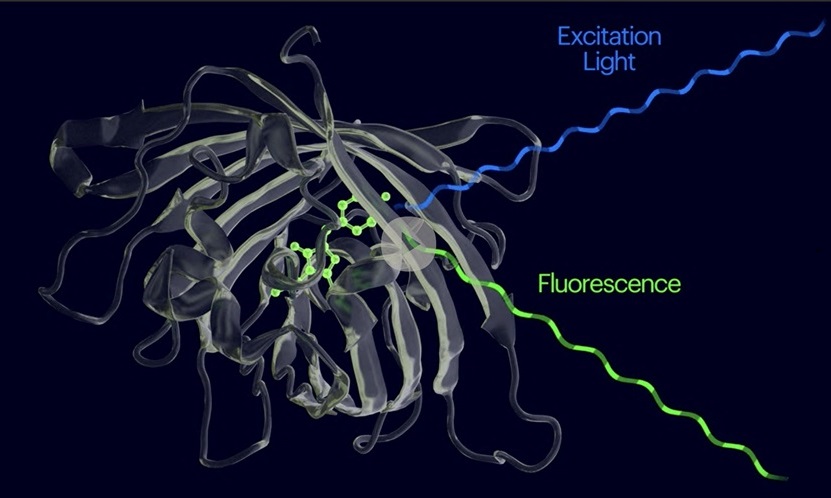Binding-Activated Fluorescent Biosensors Open Vast Possibilities for Medical Diagnostics
Posted on 09 Sep 2024
Biosensors are devices that utilize biological molecules to detect specific substances, holding significant potential for identifying disease biomarkers, monitoring biological processes, or detecting environmental toxins. Among these, fluorescent biosensors are common; they involve a biomolecule that binds to a target attached to a probe molecule emitting fluorescent light. Traditional fluorescent biosensors often suffer from low contrast because their probes are always “on,”, requiring unbound biosensor molecules to be washed away for accurate signal detection. A significant advancement in this field is the development of high-contrast “binding-activated fluorescent biosensors” or nanosensors, which light up only upon binding to their specific targets. However, designing nanosensors that combine effective target-binding with an activated fluorescence switch within a compact molecular structure suitable for diverse samples and scalable, cost-effective production poses significant challenges.
Addressing these challenges, a collaborative research effort involving scientists from the Wyss Institute at Harvard University (Boston, MA, USA) has resulted in the development of a synthetic biology platform that simplifies the discovery, molecular evolution, and economical production of small, highly efficient nanosensors. These nanosensors can detect specific proteins, peptides, and small molecules, enhancing their fluorescence by up to 100 times in less than a second upon binding. Central to the platform is the use of novel fluorogenic amino acids (FgAAs) that are integrated into small protein sequences (binders) through an innovative method that allows for the in vitro expansion of the genetic code. This process facilitates high-throughput screening, validation, and directed evolution of protein binders into high-contrast nanosensors, accelerating development across various fields including basic research, environmental science, medical diagnostics, and enhanced therapeutics. The findings of the research have been published in Nature Communications.

“We have long worked on expanding the genetic code of cells to endow them with new capabilities to enable research, biotechnology, and medicine in different areas, and this study is a highly promising extension of this endeavor in vitro,” said Wyss Core Faculty member George Church, Ph.D., who led the study. “This novel synthetic biology platform solves many of the obstacles that stood in the way of upgrading proteins with new chemistries, as exemplified by more capable instant biosensors, and is poised to impact many biomedical areas.”
“This is an important step forward in our capabilities to quickly design low-cost fluorescent biosensors for real-time disease monitoring and with huge potential for diagnostics and precision medicine,” added co-corresponding author Marc Vendrell, Ph.D., a Professor at the University of Edinburgh.
Related Links:
Wyss Institute at Harvard University













